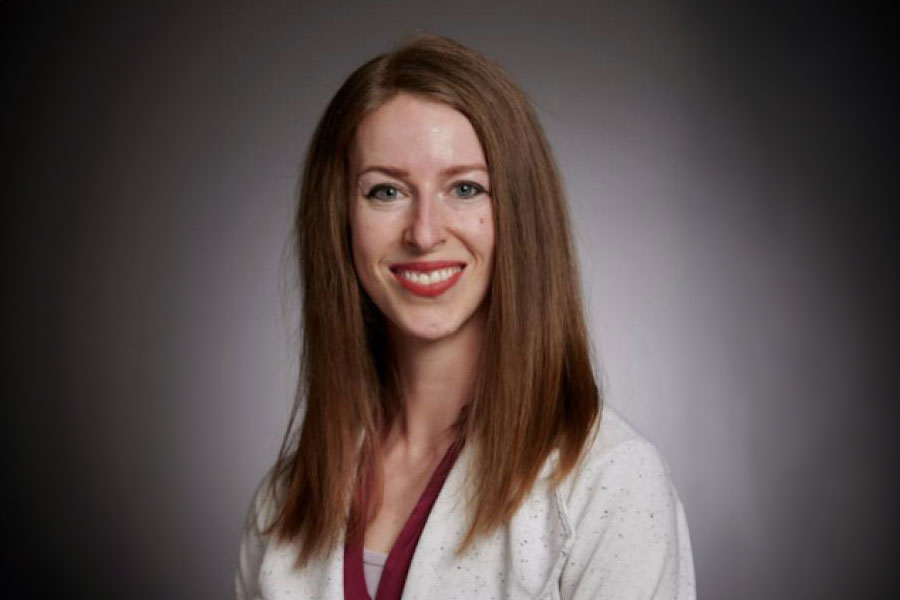
A year of extreme joy and tragedy led fourth-year vet student Susan Arnold down a career path she didn’t originally see for herself—at the Canine Brain Tumor Program at the University of Minnesota.
The joy she experienced that year was in discovering her passion for neurology. Approaching the end of her program in veterinary medicine at the University of Wisconsin, she’d been feeling doubt about her long-held goal of becoming a wildlife epidemiologist.
She then started a new rotation in the neurology department and was immediately called to action. On her first day, a young standard poodle named Batman who had been hit by a car was transferred to their care. He had an injury to his brachial plexus—the network of nerves in the armpit that carries movement and sensory signals to the front legs. It’s a common result of such a car accident, and it can lead to permanent paralysis.
Arnold was responsible for Batman during his time in the hospital, and she was thrilled to watch and support him as he recovered. Her experience in that rotation gave her a new sense of purpose and direction.
The tragedy she experienced that year happened around the same time. One of her high school friends, Curtis, had been diagnosed with glioblastoma, an aggressive and deadly form of brain cancer. He passed away 18 months later.
The juxtaposition of these life experiences—her discovery of her love of neurology and her pain of losing a friend to glioblastoma, was pivotal. She soon shifted her career path toward neurology and neurosurgery, with a heavy emphasis on brain tumor research.
An internship brought Arnold to the University of Minnesota College of Veterinary Medicine (CVM) and the Canine Brain Tumor Clinical Trials Program. That program, housed at the Masonic Cancer Center, coordinates collaborations between medical researchers and veterinarians to diagnose brain tumors in dogs and treat them with breakthrough therapies.
“There are very few options for treating brain tumors in dogs, so the research is crucial for helping dogs and their families,” Arnold said. “And we’ve also learned that dogs are an excellent model for brain tumors in people, so we can take the knowledge we gain and see if it can be applied in human medicine.”
Arnold, now an assistant professor at CVM, splits her work between clinical neurology at CVM’s Veterinary Medical Center, and a researcher in the Brain Tumor Program. Additionally, Arnold is finishing her PhD at CVM in comparative and molecular biosciences. Her PhD involves research into brain tumor treatment responses concerning genetic differences among dog breeds. This work, too, has translational potential for human brain tumor sufferers, as it could provide clues to the genetic basis of why some people respond to treatment and others don’t.
“I can say confidently that there is no place as strong as the U of M for collaborative translational brain tumor research,” Arnold said. “We are one of the very few veterinary medical schools in a major metro area that’s home to so many healthcare companies and is on the same campus as a human medical school, a cancer center, and many other excellent research departments. When I think about doing this work elsewhere—it’s possible, but it wouldn’t be nearly as efficient or expansive as it can be here.”
This is adapted from the original story published by the College of Veterinary Medicine.
- Categories:
- Health
- Animals
- Health conditions




